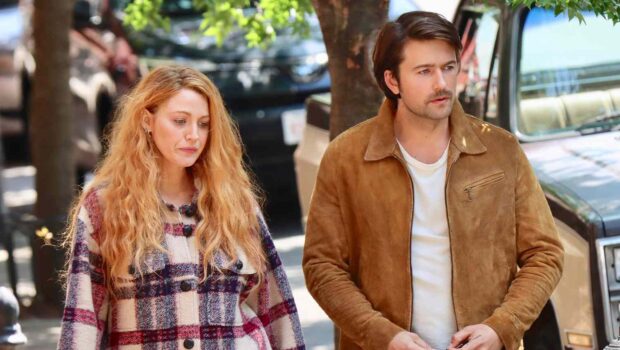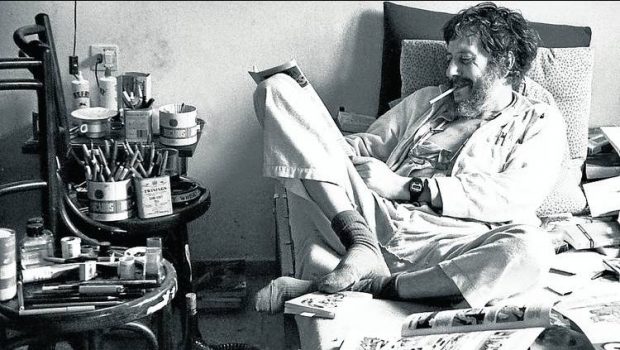It Does Not End With Us
Linda Juarez
It Ends With Us is a film adaptation of Colleen Hoover’s bestselling novel of the same name, directed by Justin Baldoni. The movie explores the delicate and often devastating issue of domestic violence, a theme that Hoover’s novel famously addresses with raw honesty. However, the film’s portrayal of this heavy subject matter has stirred mixed reactions, particularly in its treatment of the nuances and gravity of domestic abuse.
Justin Baldoni, known for his directorial work on Five Feet Apart and as a co-producer on the movie Clouds, chose to adapt It Ends With Us due to its powerful narrative and emotional depth. Baldoni has spoken in interviews about his desire to bring stories to the screen that challenge societal norms and spark important conversations. In choosing to adapt this novel, Baldoni aimed to shed light on the complexities of domestic violence, a subject often shrouded in silence and stigma.
Blake Lively delivers a strong and nuanced performance as Lily Bloom, the protagonist caught in a cycle of love and abuse. Lively captures the vulnerability and strength of a woman who is both deeply in love and increasingly aware of the dangerous path her relationship is taking. Her portrayal adds a layer of empathy and realism that makes Lily’s journey compelling, even as the movie’s narrative choices sometimes undermine the severity of her experiences.
Domestic Violence Portrayal
One of the critical aspects of both the novel and the film is the portrayal of domestic violence. In the novel, Hoover does not shy away from the brutal realities of abuse, presenting it as a complex and multifaceted issue that cannot be easily resolved. The book is lauded for its ability to depict the internal conflict that victims face—the tension between love and fear, hope and despair.
However, the film’s portrayal has been criticized for somewhat playing down the severity of domestic violence. This downplaying seems to stem from a desire to make the story more palatable for a wider audience, but it results in a narrative that can feel less impactful than its source material. While Baldoni’s direction attempts to balance the romantic and tragic elements of the story, the result is a film that, at times, feels like it glosses over the darker aspects of the story in favor of a more digestible narrative.
When compared to other films that tackle domestic violence, such as Sleeping with the Enemy (1991) or Enough (2002), It Ends With Us takes a more subdued approach. These earlier films did not shy away from showing the physical and emotional toll of domestic violence, often with intense, dramatic scenes that highlighted the perilous situations the protagonists faced. In contrast, Baldoni’s film seems to focus more on the emotional journey and the psychological aspects, but at the expense of diminishing the horror of the abuse itself.
Unlike the more raw and unfiltered depictions in films like The Color Purple (1985) or Precious (2009), which left a lasting impact by showing the grim realities of abusive relationships, It Ends With Us sometimes feels like it is holding back. This might make the film more accessible, but it also risks diluting the urgency and seriousness of the issues it seeks to address.
Linda Juarez is a film critic. She has collaborated in an array of magazines and blogs. Her forthcoming book Latine in Hollywood will be publish in 2025.
It Ends With Us es una adaptación cinematográfica de la exitosa novela de Colleen Hoover del mismo nombre, dirigida por Justin Baldoni. La película explora el delicado y, a menudo, devastador tema de la violencia doméstica, una temática que la novela de Hoover aborda con una cruda honestidad. Sin embargo, la representación de este tema tan serio en la película ha generado reacciones ambivalentes, especialmente en su forma de tratar las complejidades y la gravedad del abuso doméstico.
Justin Baldoni, conocido por su trabajo como director en Five Feet Apart y como coproductor de la película Clouds, eligió adaptar It Ends With Us debido a la poderosa narrativa y profundidad emocional de la historia. Baldoni ha mencionado en entrevistas su deseo de llevar a la pantalla historias que desafíen las normas sociales y generen conversaciones importantes. Al optar por adaptar esta novela, Baldoni pretendía arrojar luz sobre las complejidades de la violencia doméstica, un tema a menudo rodeado de silencio y estigma.
Blake Lively, la actriz principal del reparto, ofrece una actuación sólida y matizada como Lily Bloom, la protagonista atrapada en un ciclo de amor y abuso. Lively captura la vulnerabilidad y la fuerza de una mujer que está profundamente enamorada y, al mismo tiempo, cada vez más consciente del peligroso camino que está tomando su relación. Su interpretación añade una capa de empatía y realismo que hace que el viaje de Lily sea convincente, incluso cuando las decisiones narrativas de la película a veces socavan la gravedad de sus experiencias.
Presentación de la Violencia Doméstica
Uno de los aspectos críticos tanto de la novela como de la película es la representación de la violencia doméstica. En la novela, Hoover no rehúye de las brutales realidades del abuso, presentándolo como un problema complejo y multifacético que no puede resolverse fácilmente. El libro es elogiado por su capacidad para retratar el conflicto interno que enfrentan las víctimas: la tensión entre el amor y el miedo, la esperanza y la desesperación.
Sin embargo, la película ha sido criticada por restarle importancia a la seriedad de la violencia doméstica. Esta minimización parece derivarse de un deseo de hacer que la historia sea más digerible para un público más amplio, pero el resultado es una narrativa que puede sentirse menos impactante que el material original. Aunque la dirección de Baldoni intenta equilibrar los elementos románticos y trágicos de la historia, el resultado es una película que, a veces, parece pasar por alto los aspectos más oscuros de la historia en favor de una narrativa más accesible.
En comparación con otras películas que abordan la violencia doméstica, como Durmiendo con el enemigo (1991) o Nunca más (2002), It Ends With Us adopta un enfoque más sutil. Estas películas anteriores no evitaron mostrar el impacto físico y emocional de la violencia doméstica, a menudo con escenas dramáticas e intensas que resaltaban las situaciones peligrosas que enfrentaban las protagonistas. En contraste, la película de Baldoni parece centrarse más en el viaje emocional y los aspectos psicológicos, pero a costa de minimizar el horror del abuso en sí.
A diferencia de las representaciones más crudas y sin filtros en películas como El color púrpura (1985) o Precious (2009), que dejaron una impresión duradera al mostrar las duras realidades de las relaciones abusivas, It Ends With Us a veces parece contenerse. Esto puede hacer que la película sea más accesible, pero también corre el riesgo de diluir la urgencia y seriedad de los problemas que busca abordar.
It Ends With Us es una adaptación conmovedora pero imperfecta. Aunque la actuación de Blake Lively es encomiable y la dirección de Justin Baldoni es sincera, el manejo de la violencia doméstica en la película parece atenuado en comparación con la brutal honestidad de la novela. Para los espectadores familiarizados con el libro de Colleen Hoover, la película podría parecer que omite algunos de los momentos emocionales críticos que hicieron que la novela fuera tan poderosa. Sin embargo, para aquellos que son nuevos en la historia, aún ofrece una exploración atractiva, aunque algo suavizada, de la lucha de una mujer por liberarse del ciclo de abuso.
En el contexto de otras películas sobre el mismo tema, It Ends With Us podría no ser la más impactante, pero aún aporta valor a la conversación al llevar el tema de la violencia doméstica a un público más amplio. Si resuena o no tan profundamente como sus predecesoras depende en gran medida de las expectativas del espectador y de su familiaridad con el material original.
Linda Juarez is a film critic. She has collaborated in an array of magazines and blogs. Her forthcoming book Latine in Hollywood will be publish in 2025.










